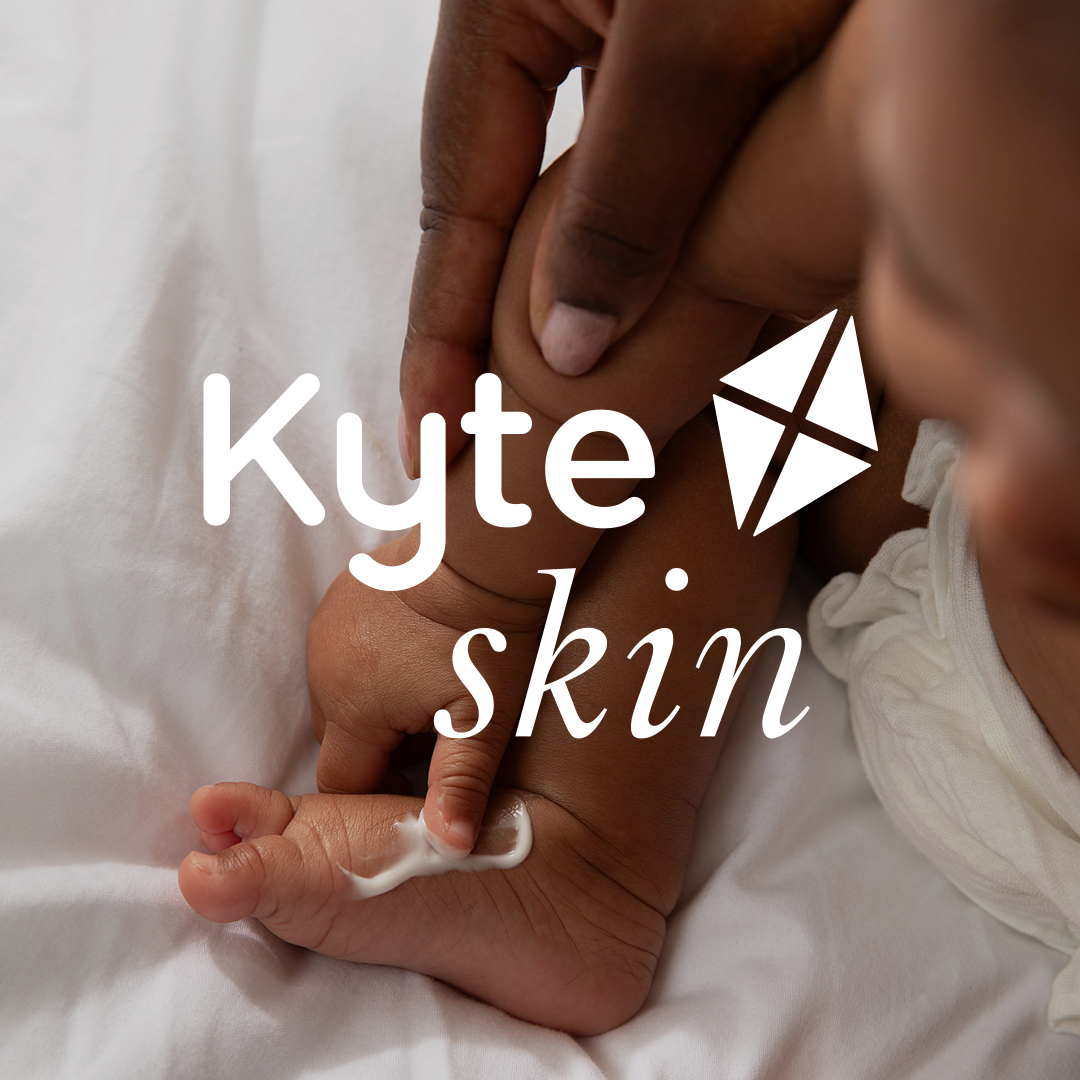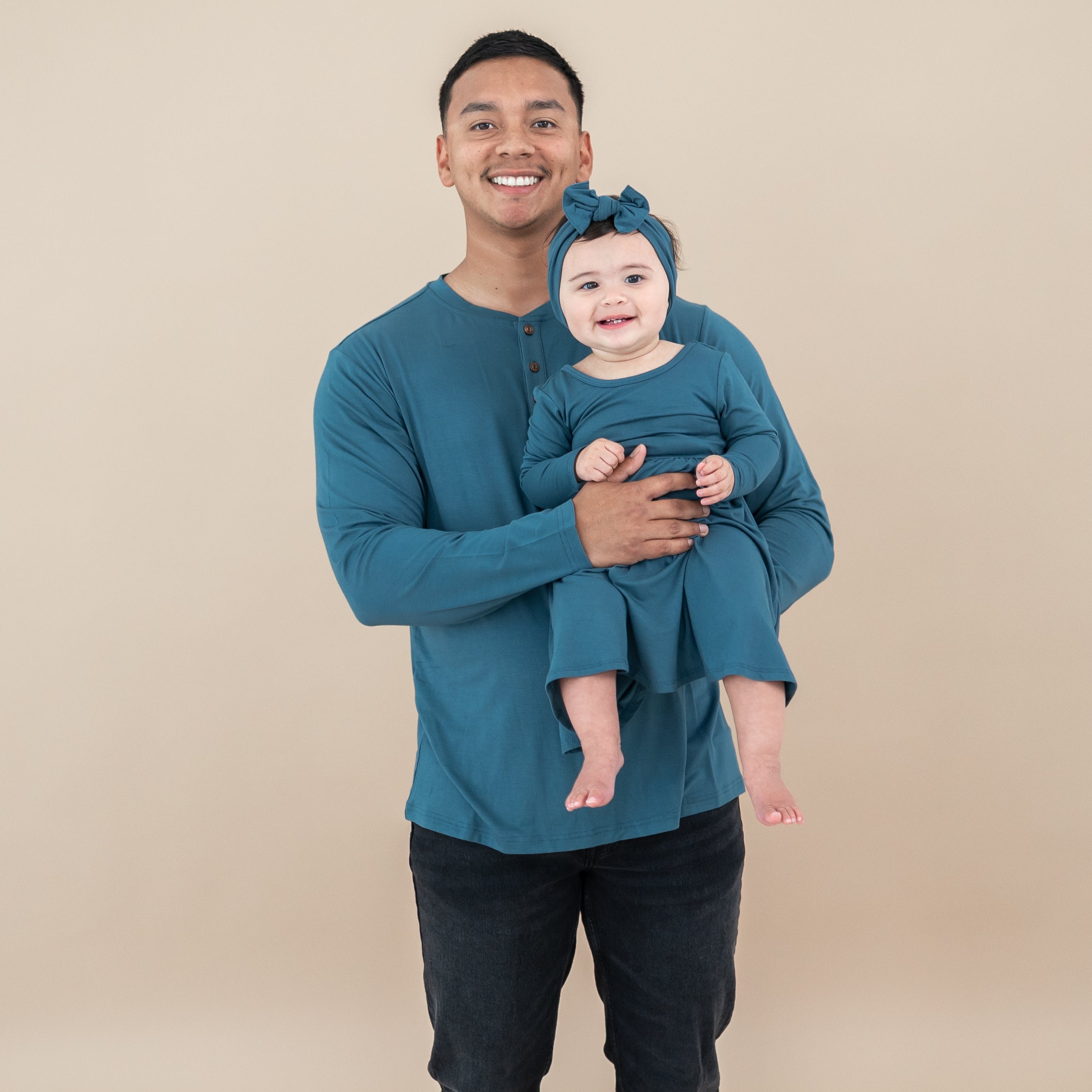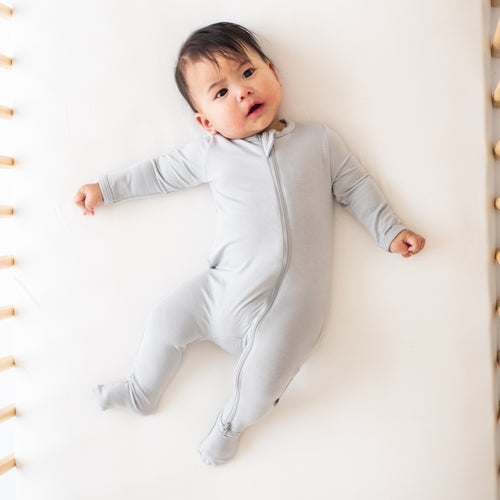Side sleeping, back sleeping, or tummy sleeping? It can be so hard to know what is best for our babies so we will take a look at research in this blog post so that you can make an informed decision about your baby’s sleeping position.
If only babies came with instruction manuals! Since they do not, we only have our intuition and research to rely on!
What is the Best Sleep Position for Baby?
Some babies will have a preference for sleeping on the side or sleeping on their tummy, but the evidence remains that back sleeping is safest for baby until they roll themselves onto their side or tummy.
We will examine the research further but also answer other frequently asked questions like:
- When did the back to sleep campaign start?
- Why should babies not sleep on their side?
- How do I let my baby sleep on their side?
- Will my baby with reflux choke on their back?
- Can infants be placed to sleep on their stomachs for naps?
- Can babies sleep on their side based on the NHS guidelines?
- At what age do babies start to roll on their side?
- Do I need to use a positioner to keep my baby on his/her back?
When Did the Back to Sleep Campaign start?
In the 1970s and '80s, stomach sleeping was highly encouraged by doctors as they thought this would prevent babies from choking in their sleep. Unfortunately, this is when cot death (also known as SIDS) rose rapidly. In 1992, the American Academy of Pediatrics recommended that all babies be placed on their back to sleep for the first year in order to reduce the risk of Sudden Infant Death Syndrome (SIDS).
The recommendations seem to have worked because SIDS deaths have decreased from 130.1 cases per 100,000 live births in 1990 to 39.4 in 2015. SIDS is still the leading cause of death in babies one month to one year of age, so it is important to understand the research and recommendations behind safe sleep or placing babies on their back to sleep. There is a ton of research and information about helping babies sleep safely.
Why Should Babies Not Sleep on Their Side?
So we know why we should not place our babies down on their tummy to sleep, but why should babies not sleep on their side? While it may seem less dangerous, it can still put babies in a vulnerable position and they could easily roll to their belly before they have the motor skills or strength to protect their airway while on their belly.
Studies have found that the side sleep position is unstable and increases the chance that infants will roll onto their stomachs. Some other problems that side sleeping can lead to include Plagiocephaly (flat head/flat spots on their head).
Flat Head Syndrome
According to Healthline, “A baby’s skull bones don’t fully fuse and harden until several months after birth. Soft, pliable bones allow for easier passage through the birth canal and gives a baby’s brain ample room to grow. The soft bones also mean that a baby’s head can change shape.
One common cause for flat head syndrome is regularly sleeping or lying in the same position.”Yes, this is a cosmetic issue more than anything, however it can also lead to other issues like chronic ear infections because it can make the canals smaller and harder to drain fluid from.
What Causes Plagiocephaly?
Can back sleeping also cause plagiocephaly? Yes, absolutely. Positional plagiocephaly results from an infant being placed in the same position (usually on the back) for long periods of time.
Brachycephaly (flattening of the back of the skull) may occur along with positional plagiocephaly. The primary causes of positional plagiocephaly and brachycephaly are:
- Too little time spent upright
- Too little Tummy Time when the baby is awake and supervised
- Too much time in car seats, carriers, and bouncers.
Positional plagiocephaly and brachycephaly are usually harmless and often disappear on their own within the months after babies start to sit up. There is no evidence to suggest that such flat spots are harmful to infants or that they are associated with any permanent effects on head shape.
Repositioning Newborns to Avoid Positional Plagiocephaly
Many cases of positional plagiocephaly can be prevented (and sometimes corrected) by repositioning, which relieves pressure from the back of an infant’s head.
Techniques for repositioning include:
- Alternating the baby’s head position when he or she is placed to sleep so that the baby is not always sleeping on the same side of the head
- Changing the direction the baby faces in the crib every week or so (feet at one end of the crib one week, at the other end of the crib the next week)
- Periodically moving the crib around the room so the infant has to turn his or her head in different directions to see what is going on
- Getting “cuddle time” with the baby by holding him or her upright over one shoulder often during the day
- Limiting the amount of time the baby spends in car seats, carriers, swings, and bouncy seats In addition, getting ample supervised Tummy Time is also important for reducing the likelihood of positional plagiocephaly.
Positional plagiocephaly is very different from craniosynostosis (premature fusion of the sutures of the skull), congenital muscular torticollis (twisted neck present at birth), and other types of plagiocephaly. These other types of plagiocephaly often require special molding helmets or surgery to correct.
- Choking: side sleeping can cause aspiration or choking on any regurgitated fluids just like back sleeping because anatomically speaking, the position of the trachea is compromised where fluid can pool in that area.
- Torticollis: this is a head tilt caused by a tight sternocleidomastoid muscle (SCM). This large, rope-like muscle runs on both sides of the neck from the back of the ears to the collarbone. Extra pressure on one side of the SCM can make it tighten, which makes it hard for a baby to turn his or her neck.Sleeping on one side can allow for the muscle to shorten and cause a baby to have difficulty with full head/neck range of motion.
How Do I Let My Baby Sleep on Their Side?
Whether baby sleeping on side 3 months, baby sleeping on side 4 months, baby sleeping on side 5 months, or 6-month-old baby sleeping on side, if they get themselves into that position, then they can sleep in that position!
The study linked above about baby sleeping on side during early infancy, shows it is unusual for a baby who is placed in the back sleep position to roll onto his or her stomach. However, once infants are more developmentally advanced, they often roll over on their own. In this situation, when infants roll over on their own, there is no evidence that they need to be re positioned to reduce the risk of SIDS.
It is most important that the infant is placed to sleep in the back sleep position for every sleep time. Keeping the sleep area clear of soft or loose bedding also increases safety for the infant if he or she rolls onto the stomach.
What about 6 month-old sleeping on stomach or baby sleeping on tummy at 7 months? You can rest assured that they are safe to sleep in whatever position they get themselves into as long as their sleep space is safe (empty) of anything they could get wrapped up in or would compromise their airway.
Will My Baby With Reflux Choke on Their Back?
There is no evidence that aspiration is more common among healthy infants who sleep in the supine position than among healthy infants who sleep in the prone position. Furthermore, in countries (including the United States) that have seen a major change in infant sleep position—from mainly stomach sleeping to mostly back sleeping—the incidence of serious or fatal choking has not increased.
In fact, babies may actually clear secretions better when placed on their backs. When babies are in the back sleep position, the trachea lies on top of the esophagus. Anything regurgitated or refluxed from the esophagus must work against gravity to be aspirated into the trachea. Conversely, when an infant is in the stomach sleep position, anything regurgitated or refluxed will pool at the opening of the trachea, making it easier for the infant to aspirate.
Also, chemosensitive tissue that initiates the reflex is more prominent on the posterior versus anterior pharyngeal wall, thus suggesting an even greater protection against aspiration when the baby is lying on his or her back. Of the very few reported cases of death due to choking, most of the infants were in the stomach sleep position.
Can Infants Be Placed to Sleep on Their Stomachs for Naps?
This practice is not actually recommended either. Studies show that babies who are used to sleeping on their backs, but who are then placed on their stomachs or sides to sleep, such as for a nap, are at significantly higher risk for SIDS. This risk is actually greater—sometimes seven to eight times greater—than that of infants who are always placed on their stomachs or sides to sleep.
Can Babies Sleep on Their Side Based on the NHS Guideline?
NHS guidelines follow the same recommendations as the American Academy of Pediatrics for safe sleep! They state the safest position from day one for a healthy baby to sleep is on their back.
At What Age Do Babies Start to Roll on Their Side?
Typically, by 4-7 months a baby has mastered rolling from back to belly and belly to back equally over their left and right side! You can read this blog for more information about when will my baby roll over!
You will need to stop swaddling when your child is showing the first signs of intentionally rolling which can happen as early as 8 weeks. When that happens, you can definitely make the switch to baby sleep sacks!
What is the Newborn Curl?
There is a position called the “newborn curl” which is just physiological flexion. Meaning, this is the position they were likely in while in the womb so it is a normal position for them to assume when lying down.
So here is the break down on the “newborn curl.” In the third trimester of pregnancy, muscle tone begins to develop, which reinforces the fetal position. This is essentially physiological flexion, or the newborn curl seen once a baby is born. Before this point, in preemie babies for example, the are typically “floppier” and have less of that fetal position preference.
The entire anatomical and physiological purpose of flexion is to lengthen the muscles on the back of the body (extensors) to prime them to be ready to work first, in positions like tummy time and rolling from belly to back where those muscles have to activate to create movement against gravity.
Once those muscles develop, they are lengthening the muscles on the front of the body (the flexors) and gets them ready to work to create movements like intentional rolling from back to belly, which happens around 6 months of age.
In regards to the developmental sequence, until those flexor muscles develop, a baby is typically unable to intentionally roll from back to belly, as the muscles have not been primed to contract effectively and intentionally against gravity.
So even though it appears your baby is trying to roll, or may even be successful in rolling in the newborn days, it is not intentional, just based on anatomy and physiology, and it will dissipate as they lengthen the extensor muscles to come out of that physiological flexion. Those muscles will then strengthen and the roll returns when it is intentional around 6 months of age.
Babies May Struggle with Sleep After Starting to Roll
First, there are some existing blogs that may help you with this! Check out these articles:
- Baby sleep schedule: this can help with the timing of sleep so that your little one is not getting overtired and having a hard time settling
- Dream feed: this can be helpful to implement if it buys you some extra hours of sleep
- Baby sleep training methods: when you are dealing with different stages of development and changes to sleep, it can be beneficial to have a game plan in place for how to respond to your little one and support them through it
- Babies sleeping through the night: let’s make sure we have a realistic expectation for our little ones sleep!
- Baby sleep regression: know what is coming up that may disrupt sleep for short periods of time
It is incredibly disorienting to fall asleep in one position, like on their back, and wake up in another like on their side or tummy when it is a new thing! They do not have the same muscle paralysis that adults do so they end up doing all sorts of movements in their sleep while they are learning new skills.
It is typically a short term process-- unless we intervene constantly. More intervention from us means the longer it takes for them to figure out that they are actually okay to sleep in positions they get themselves into.
That means if every time your child rolls onto their belly and they cry, we go in to flip them back over and you repeat that all. night. long. then they do not actually learn that it is okay! It is helpful to soothe them while they are in the position they got themselves into without doing all of the work all of the time.
Here are some other things you can do to get through the rolling stage:
- Lots and lots of tummy time during the day (or just floor time in general). The more they practice, the less “new” things are and the quicker they get used to being in other positions!
- Lie your baby on his tummy and gently bend his right leg forward under his chest, while stretching his left arm above his head. Keeping your baby’s leg bent, slowly and carefully rotate him onto his back, using your other hand as support. Remember to alternate legs each time.
- Hold your baby on his side, and gently turn his body either onto his back or tummy. Or you can leave your baby on his side and watch to see if he can roll onto his stomach or back on his own. Remember to stimulate rolling to both sides, and also from back to tummy and the other way round.
Do I Need to Use a Positioner to Keep my Baby on His/Her Back?
Unfortunately, no. Anything that prohibits movement is unsafe to use. This could be very dangerous if a wiggly baby were to get free from the positioner; they may compromise their airway in some form.
“Wedges, positioners, and other devices that claim to be able to prevent SIDS or correctly position infants for sleep are not recommended. These products have not been tested for safety or effectiveness. In fact, the Consumer Product Safety Commission (CPSC) has reports of deaths attributable to accidental suffocation and entrapment associated with wedges and positioning devices.
Most of these deaths occurred when infants were placed in the prone or sidelying position with these devices. The infant can roll onto his or her stomach and become trapped and suffocate between the device and side of the crib or bassinet.
Also, the infant’s movement can cause the nose and mouth to press into or underneath the device, posing a risk for suffocation. This is particularly true for products made with foam rubber or Memory FoamTM. The U.S. Food and Drug Administration, the CPSC, and the AAP warn against using any of these products because of the dangers they pose to babies.
Takeaways About Newborn Side Sleeping
Until a baby is able to intentionally place themselves in other positions, they should sleep on their back.
Once they are rolling from back to belly or belly to back, then make sure you have unswaddled them (let their arms go free). Continue to place them on their back for the first year of life.
If they roll themselves onto their side or their belly, then it is totally fine to leave them there!
Of course, not every child will love to sleep on their back. Swaddling with the addition of loud white noise can help your newborn learn to sleep on their back. Every sleep counts, so each opportunity they get to sleep on their back, the faster they learn to adjust to it.
Remember that sleep surface matters as well! Every infant should be placed on their back on a firm sleep surface in a crib, bassinet, or pack n play without anything else added to it.
Research shows that 90 percent of SIDS deaths occur in infants younger than 6 months of age, with a peak between 1 month and 4 months of age.
However, SIDS can occur at any time during an infant’s first year, so parents and caregivers should continue to be advised to use back sleeping and other ways to reduce the risk of SIDS and other sleep-related causes of infant death until their baby’s first birthday.
About the Author
Ashley Olson is a certified pediatric sleep consultant, owner of Heaven Sent Sleep, and passionate about helping new parents, experienced parents, desperate and sleep-deprived parents form healthy sleep habits for their children.
She has over 3 years of experience in working with families and has completed over 150 hours of coursework plus continuing education related to infant and toddler sleep. The focus of her work is on fostering a routine that grows your bond with your child while improving their sleep habits. She specializes in custom sleep plans and one on one support in changing sleep practices!




























